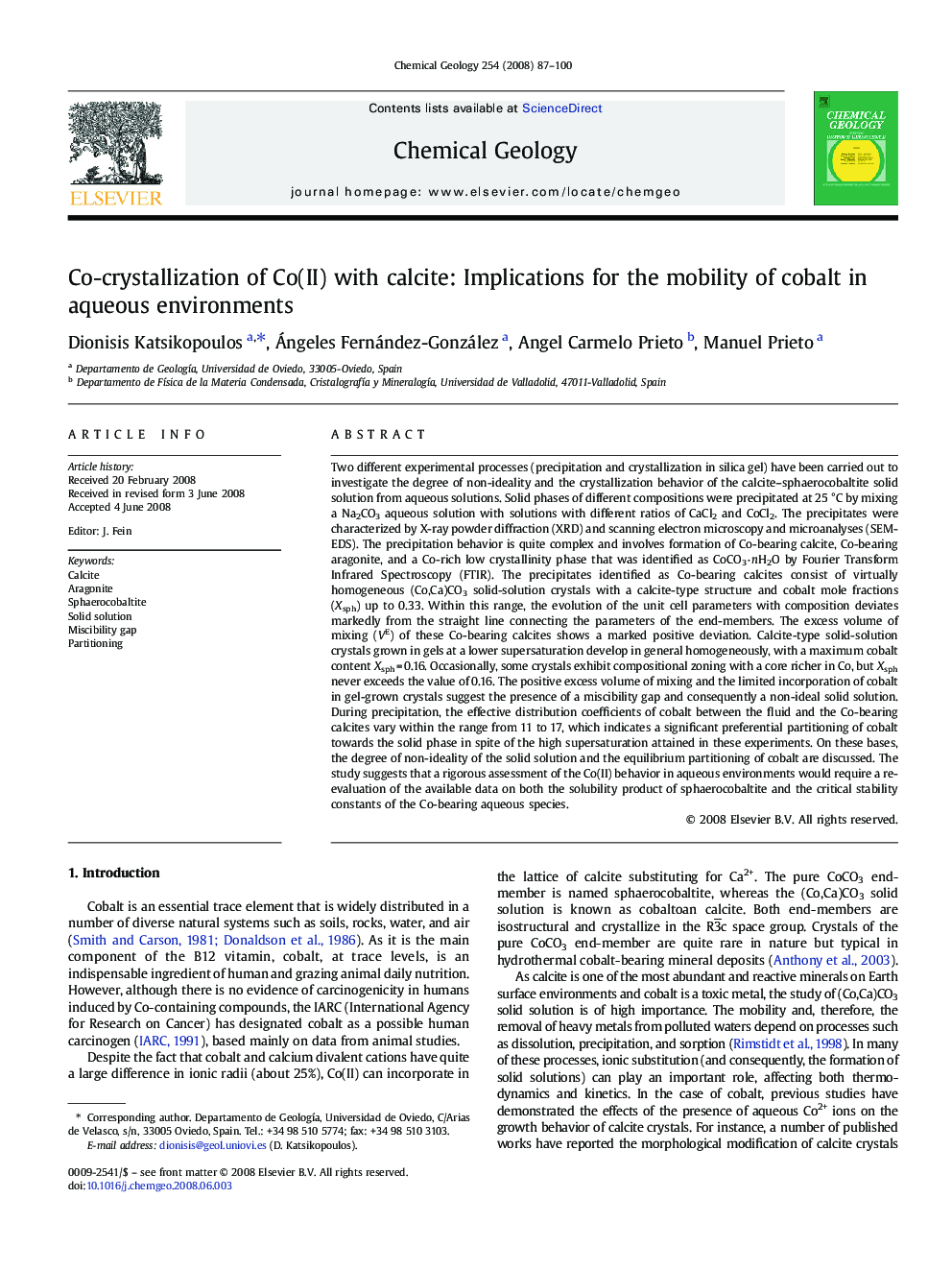| کد مقاله | کد نشریه | سال انتشار | مقاله انگلیسی | نسخه تمام متن |
|---|---|---|---|---|
| 4700545 | 1637724 | 2008 | 14 صفحه PDF | دانلود رایگان |

Two different experimental processes (precipitation and crystallization in silica gel) have been carried out to investigate the degree of non-ideality and the crystallization behavior of the calcite–sphaerocobaltite solid solution from aqueous solutions. Solid phases of different compositions were precipitated at 25 °C by mixing a Na2CO3 aqueous solution with solutions with different ratios of CaCl2 and CoCl2. The precipitates were characterized by X-ray powder diffraction (XRD) and scanning electron microscopy and microanalyses (SEM-EDS). The precipitation behavior is quite complex and involves formation of Co-bearing calcite, Co-bearing aragonite, and a Co-rich low crystallinity phase that was identified as CoCO3 · nH2O by Fourier Transform Infrared Spectroscopy (FTIR). The precipitates identified as Co-bearing calcites consist of virtually homogeneous (Co,Ca)CO3 solid-solution crystals with a calcite-type structure and cobalt mole fractions (Xsph) up to 0.33. Within this range, the evolution of the unit cell parameters with composition deviates markedly from the straight line connecting the parameters of the end-members. The excess volume of mixing (VE) of these Co-bearing calcites shows a marked positive deviation. Calcite-type solid-solution crystals grown in gels at a lower supersaturation develop in general homogeneously, with a maximum cobalt content Xsph = 0.16. Occasionally, some crystals exhibit compositional zoning with a core richer in Co, but Xsph never exceeds the value of 0.16. The positive excess volume of mixing and the limited incorporation of cobalt in gel-grown crystals suggest the presence of a miscibility gap and consequently a non-ideal solid solution. During precipitation, the effective distribution coefficients of cobalt between the fluid and the Co-bearing calcites vary within the range from 11 to 17, which indicates a significant preferential partitioning of cobalt towards the solid phase in spite of the high supersaturation attained in these experiments. On these bases, the degree of non-ideality of the solid solution and the equilibrium partitioning of cobalt are discussed. The study suggests that a rigorous assessment of the Co(II) behavior in aqueous environments would require a re-evaluation of the available data on both the solubility product of sphaerocobaltite and the critical stability constants of the Co-bearing aqueous species.
Journal: Chemical Geology - Volume 254, Issues 1–2, 30 August 2008, Pages 87–100